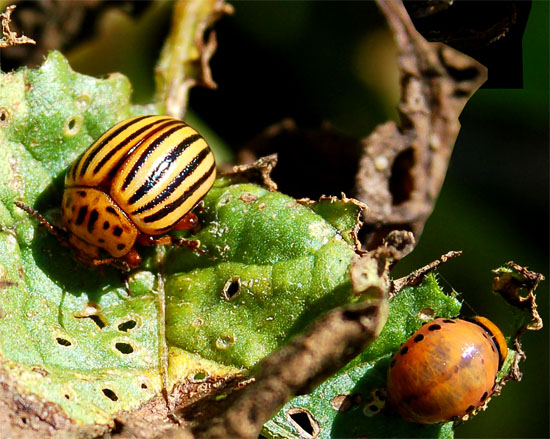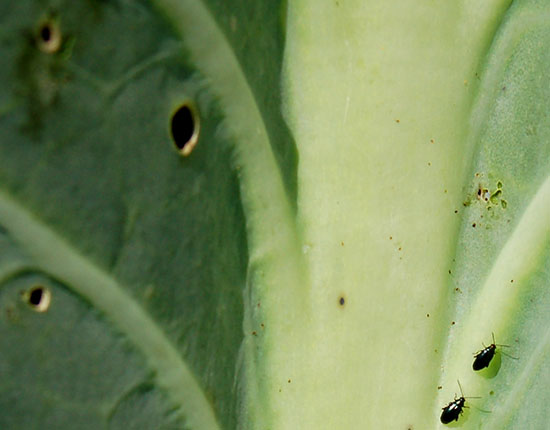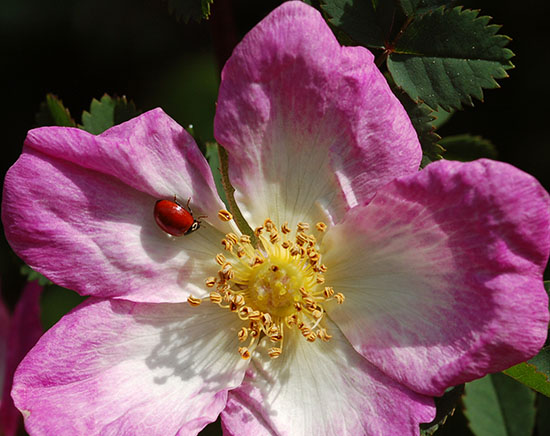It’s officially summertime. The solstice came and went. We’re tending our gardens, nurturing our vegetables and flowers. We all look forward to an abundant harvest of fantastic, home-grown, organic vegetables.
Along the way we might run into beetles. Some beetles, like ladybugs (aka lady beetles), are good partners. Beneficial insects such as these help you achieve your goals by eating insects that damage to your plants. Other beetles damage your plants:
Japanese beetles. They’re busy eating holes in these leaves (well, they’re busy doing other things as well) and can seriously damage a very wide range of garden plants. These beetles only occur east of the Mississippi. The ones shown are the adults. Their babies (whitish grubs with brown heads that curl into a “C” shape) live in the soil and eat plant roots. You can hand pick the adults and knock them off the plants into a can of soapy water. Beneficial nematodes that also live in the soil attack and kill a wide variety of soil dwelling insects, including the larvae of Japanese beetles.
Colorado potato beetles. The adult is on the left and a baby (larva) on the right. The adults and larvae have voracious appetites for numerous garden plants and can be quite destructive. The soapy water trick works on adults and larvae alike. Bt san diego (Bacillus thuringiensis var. san diego), a parasitic bacterium that infects and kills beetles and only beetles, provides excellent control. Be careful to get the variety san diego for beetles. The more common variety of Bt is var. kurstaki which only kills caterpillars and will have no effect at all on your beetles.
Flea beetles. So called because they are very tiny and hop like fleas. These insects are too small to hand pick. They chew lots of small roundish holes in leaves and can make eggplant leaves look like lace. Their larvae live in the soil and eat plant roots. Thus beneficial nematodes make a good remedy for these beetles.
Curculio or Weevil. The long snout is the give-away. This is a rose curculio on a ‘Harrison’s Yellow’ rose flower. They eat holes in the flower petals, chew up the stamens and lay their eggs in the flower. Hand-picking into soapy water works on these guys. The larva is a legless, whitish grub with a brown head. It drops to the ground when it’s ready to pupate to become an adult. Because it spends part of its life cycle in the soil it is also vulnerable to beneficial nematodes.
Ladybug (aka lady beetle). Not really a bug at all but a true beetle. There are many species of lady beetles and all of them are valuable partners in the garden. They are voracious predators of aphids and other soft bodied insects so they really do a good job of protecting your plants.






Leave a Reply